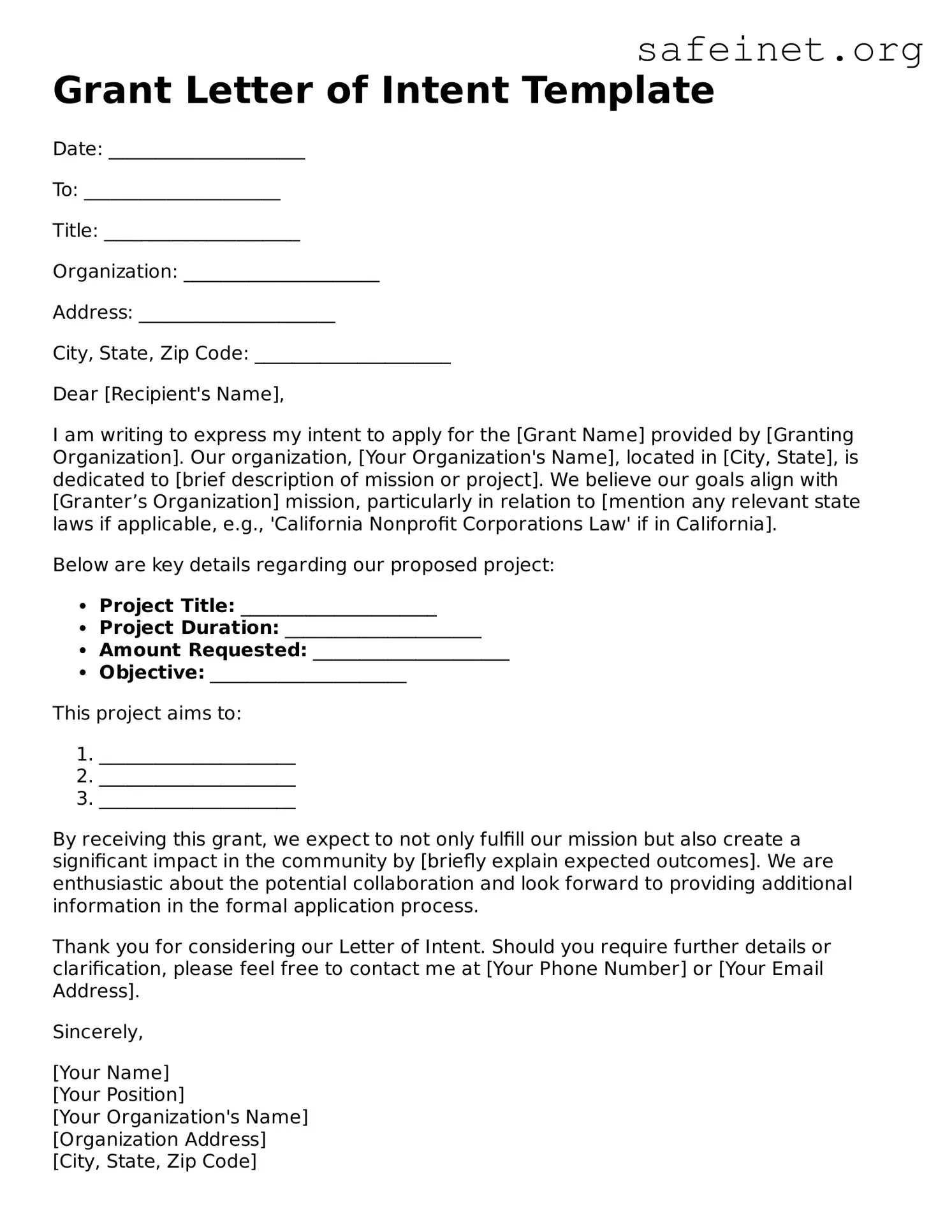What is a Grant Letter of Intent?
A Grant Letter of Intent (LOI) is a preliminary proposal submitted to funding organizations. It outlines an organization’s project idea and intention to apply for a specific grant. The LOI serves as a way for applicants to gauge the interest of the funder before creating a detailed application.
Why is a Grant Letter of Intent important?
An LOI is important because it can save time and resources. By submitting an LOI, you can determine if your project aligns with the funder's objectives. This step may help streamline the application process, as it allows funders to invite selected applicants to submit full proposals based on interest and funding priorities.
What should be included in a Grant Letter of Intent?
An effective LOI typically includes the project’s goals, a brief overview of the organization, the target population, funding amount requested, and a timeline for the project. Clarity and conciseness are vital, as you want to make a strong impression without overwhelming the reader.
How long should a Grant Letter of Intent be?
The length of an LOI can vary between funding organizations, but it is generally one to two pages long. Most funders appreciate brevity, so focus on delivering the key points clearly and succinctly.
What are the common mistakes to avoid when writing a Grant Letter of Intent?
Some common mistakes include vague language, excessive jargon, and lack of specificity. Ensure that you clearly articulate your project’s goals and how they align with the funder's mission. Avoid submitting an LOI that is too long or poorly organized, as this can leave a negative impression.
Who should write the Grant Letter of Intent?
The LOI should ideally be written by someone who is familiar with the project and the funding requirements. This could be a project manager, a program director, or someone with strong writing abilities within your organization. Collaboration may be beneficial, as input from different team members can strengthen the overall proposal.
Is a Grant Letter of Intent binding?
No, an LOI is not a binding document. It serves merely as a notification of intent to apply for funding. Funders generally understand that the details of the project may evolve as you develop your full proposal.
How do I submit a Grant Letter of Intent?
The submission process varies by funder. Check their specific guidelines for submission methods. Some organizations require electronic submissions through a portal, while others may accept email submissions or hard copies. Adhering to their instructions carefully is crucial for a successful submission.
What happens after I submit the Grant Letter of Intent?
After submission, the funding organization reviews the LOI to determine if your project fits their funding priorities. If your LOI is accepted, you will typically be invited to submit a full grant application. Be prepared to provide additional details and perhaps modify your initial proposal based on their feedback.
